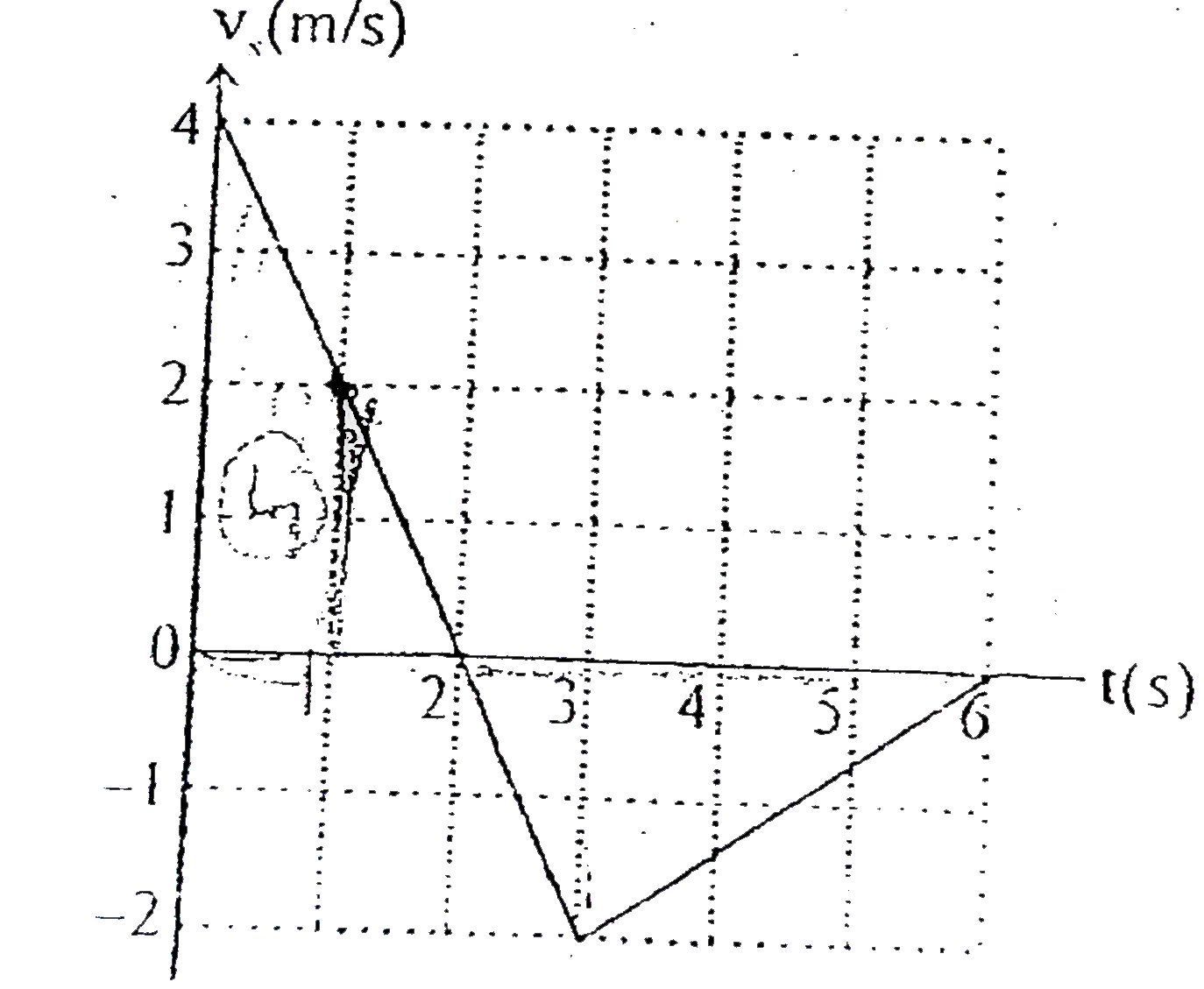At t = 2 sec., a particles is at (1,0,0,). It moves towards (4,4,12) with a constant speed of 65 m/s. The position of the paritcle is measured in metres and the time is sec. Assuming constant velocity, the position of the particle at t = 3 s is,
(13ˆi−120ˆj+40ˆk)
(40ˆi+31ˆj−120ˆk)
(13ˆi−40ˆj+12ˆk)
(45ˆi+60ˆj+180ˆk)
The correct Answer is:D
→S=→Vt
→rf−ˆi=65(3ˆi+4ˆj+12ˆk)13×3
→rf=46→i+60→j+180→k
Topper's Solved these Questions
- TEST PAPERSBOOK - BANSALCHAPTER - TEST PAPERSEXERCISE - CHEMISTRY
133 Videos
- TEST PAPERSBOOK - BANSALCHAPTER - TEST PAPERSEXERCISE - MATHEMATICS
58 Videos
- TEST PAPERSBOOK - BANSALCHAPTER - TEST PAPERSEXERCISE - MATHS SECTION - 2 [MULTIPLE CORRECT CHOICE TYPE]
6 Videos
- PROBABILITYBOOK - BANSALCHAPTER - PROBABILITYEXERCISE - All Questions
1 Video
- THERMODYNAMICSBOOK - BANSALCHAPTER - THERMODYNAMICSEXERCISE - Match the column
7 Videos
Similar Questions
When at t = 0, a particle at (1, 0, 0) moves towards (4, 4, 12) with a constant speed of 65 m/s. The position of the particle is measured in meters and time in sec. Assuming constant velocity, the x
co-ordinate of the particle at t = 2 sec is:
View SolutionWhen at t = 0, a particle at (1, 0, 0) moves towards (4, 4, 12) with a constant speed of 65 m/s. The position of the particle is measured in meters and time in sec. Assuming constant velocity, the x
co-ordinate of the particle at t = 2 sec is:
View Solution
Knowledge Check
At t=1 sec., a particle is at (1,2,0). It moves towards (,−8,10) with a constant speed of 50m/s. The position of the particle is measured in metres and the times in sec. Assuming constant velocity, the position of the particle at t=4s is :
A51ˆi−98ˆj+100ˆkB6ˆi−8ˆj+10ˆkC5ˆi−10ˆj+10ˆkD50ˆi−100ˆj+100ˆkAt t=0, a particle at (1,0,0) moves towards point (4,4,12) with a constant velocity of magnitude 65m/s. The position of the particle is measured in metres and time in sec. Assuming constant velocity, the position of the particle at t=2sec is :
A(13ˆi−120ˆj+40ˆk)mB(40ˆi+31ˆj−120ˆk)mC(13ˆi−40ˆj+12ˆk)mD(31ˆi+40ˆj+120ˆk)mVx is the velocity of a particle of a particle moving along the x−axis as shown. If x=2.0m at t=1.0s, what is the position of the particle at t=6.0s?
 A−2.0mB+2.0mC+1.0mD−1.0m
A−2.0mB+2.0mC+1.0mD−1.0m
At t=0, a particle at (1,0,0) moves towards point (4,4,12) with a constant velocity of magnitude 65m/s. The position of the particle is measured in metres and time in sec. Assuming constant velocity, the position of the particle at t=2sec is :
View SolutionVx is the velocity of a particle of a particle moving along the x−axis as shown. If x=2.0m at t=1.0s, what is the position of the particle at t=6.0s?

View SolutionA particle starts from rest and moves with an acceleration of a={2+|t−2|}m/s2 The velocity of the particle at t=4 sec is
View SolutionA particle starts from rest and moves with an acceleration of a={2+|t−2|}m/s2 The velocity of the particle at t=4 sec is
View SolutionA particle starts from rest and moves with an acceleration of a={2+|t−2|}m/s2 The velocity of the particle at t=4 sec is
View Solution
